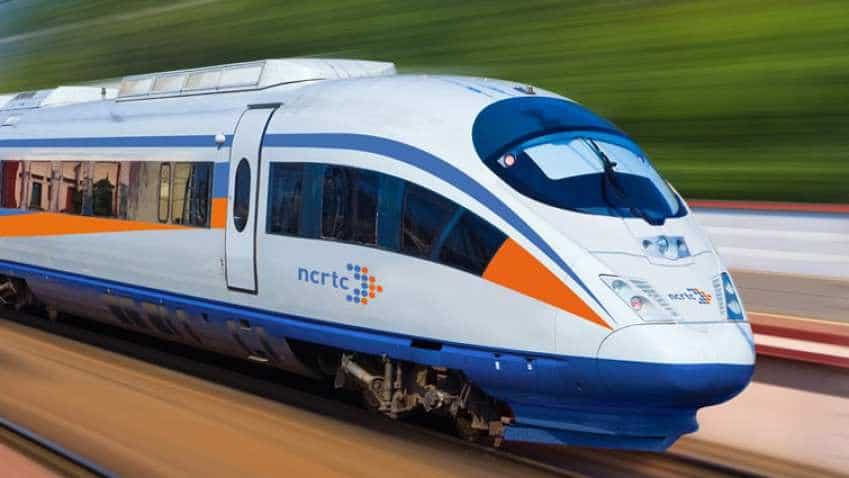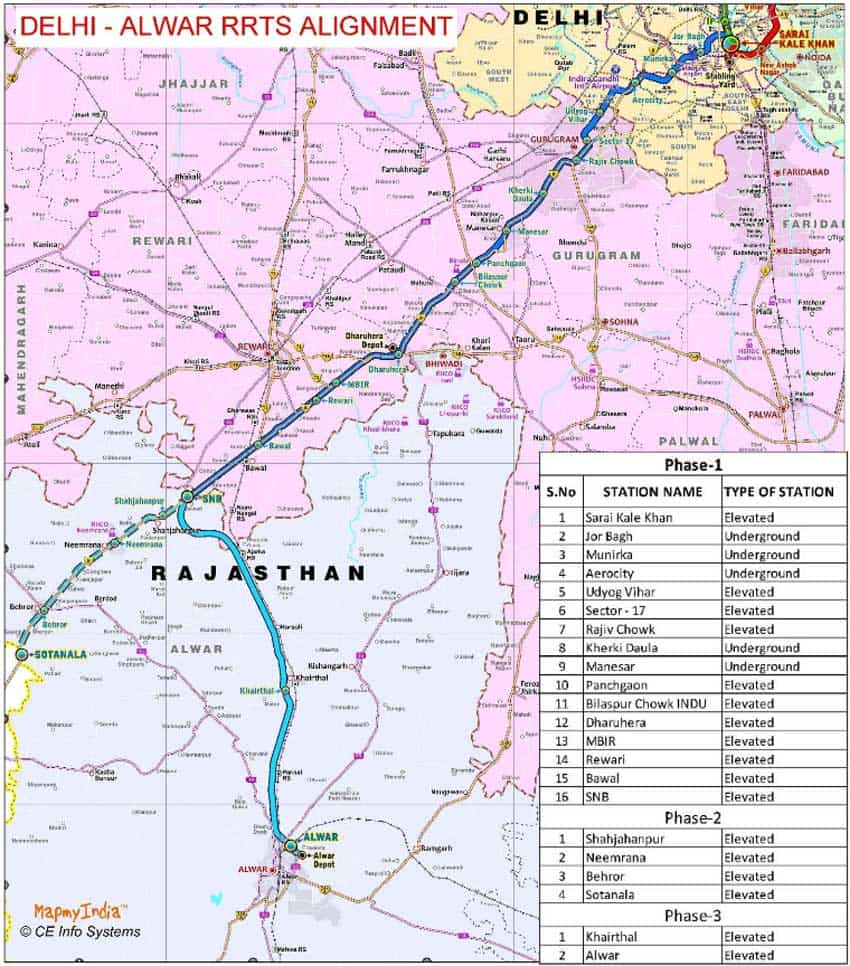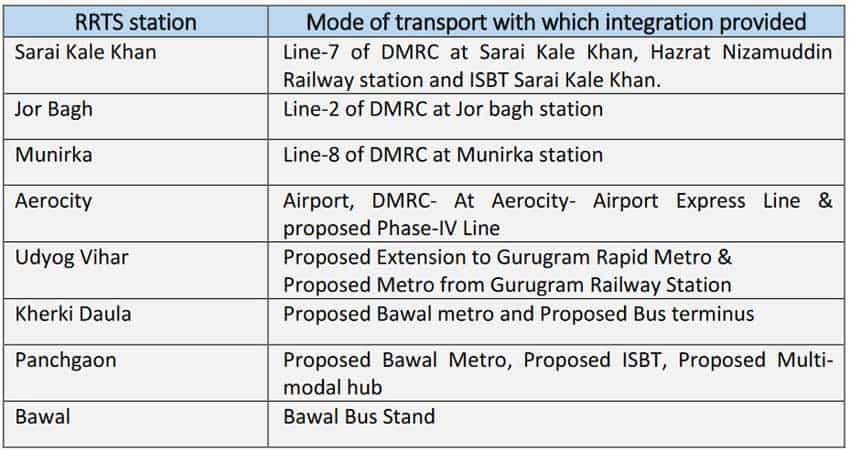Delhi-Alwar RRTS: Good news! Delhi-Gurugram-Shahjahanpur-Neemrana-Behror corridor approved; Check fare, map
Delhi-Alwar Corridor: The 106-km-long Delhi -Gurugram-SNB corridor will be elevated for about 71 km (11 stations), the remaining 35 km (5 stations) will be constructed underground, mostly in Delhi & Gurugram.

Delhi-Gurugram-SNB RRTS corridor: The NCRTC Board, chaired by Secretary, Ministry of Housing & Urban Affairs, has approved the Detailed Project Report (DPR) of Delhi-Gurugram-SNB (Shahjahanpur-Neemrana-Behror Urban Complex) RRTS corridor. The Delhi-Gurugram-SNB corridor is the first phase of the Delhi-Alwar high-speed rail corridor. The distance between Delhi to SNB is around 106 km.
"The first phase of the Delhi-Alwar corridor has been approved. Feasibility studies are on for the second phase which will be from SNB to Sotanala. The third and final phase will be from Sotanala to Alwar," told Sudhir Kumar Sharma, CPRO, NCRTC to Zeebiz.com.
Sotanala is an eco-industrial area, which is an important connectivity point from the perspective of Rajasthan.
Speed:
RRTS trains will have a design speed of 180kmph, the operation speed of 160kmph and an average speed of 100 kmph. These trains will be available at a frequency of every 5-10 minutes. Once constructed, the corridor is expected to bring down the travel time between Sarai Kale Khan-SNB to less than 70 minutes (106 km). The daily ridership on this corridor is estimated to be 8.5 Lakhs in 2025.

Fare
When asked about the fare, Sharma said that the fare of the route will be in line with that of Delhi-Meerut corridor.
"All the three corridors are centrally operable and the work is in advance stage for Delhi-Meerut Corridor. The proposed fare of the Delhi-Meerut corridor is Rs 2 per kilometre. The fare of the Delhi-Alwar corridor will be similar to the Meerut corridor," said Sharma.
Sharma also said that since these corridors are meant for the long-distance journey, the fare may be higher than Delhi Metro for shorter distances. This means if you want to undertake a journey of say 10 to 20 km in Delhi to Alwar or Delhi to Meerut corridor, you might end up paying a little extra than Metro.
The 106-km-long, Delhi -Gurugram-SNB corridor will be elevated for about 71 km (11 stations), the remaining 35 km (5 stations) will be constructed underground, mostly in Delhi & Gurugram. This corridor will converge with other RRTS corridors in Sarai Kale Khan and will be interoperable, facilitating commuters’ movement from one corridor to another without the hassle of changing trains.
The Delhi-Gurugram-SNB corridor will be seamlessly integrated with other modes of transport in NCR:

Features of the Train
The infrastructure is being designed for up to nine coaches train. These trains will be air-conditioned with transverse seating and overhead luggage space for commuter comfort. There would be priority seating arrangements for people with special needs, an exclusive coach for women travelers and a business class coach in every train to encourage people to leave their cars for public transport.
Cost and Construction Time
The corridor is planned to be constructed in about 5 years’ time excluding 1 year of pre-construction activities at a base construction cost of INR 24,975 crore, funded by Government of India (20%), concerned State Governments (20%) and bilateral/multilateral funding agencies (60%).
Economic benefits
This high-speed, high-frequency, high-capacity RRTS corridor will not only offer mass transit benefits but also bring in a wide range of economic benefits to the society including effectively curbing pollution, improving safety & reliability of commute and creating employment as well as new economic opportunities. Apart from unlocking the economic development potential of the region, such high -speed commute will bring people and places closer enabling polycentric growth in NCR.
Watch This Zee Business Tweet Video
#Fortis के मलविंदर सिंह ने शिविंदर पर हमले का आरोप लगाया, दोनों भाईयों में झगड़ा।@AnilSinghviZEE @SwatiKJain pic.twitter.com/ot7YCQiPTf
— Zee Business (@ZeeBusiness) December 7, 2018
The corridor will strengthen the regional transport infrastructure by providing a fast, safe, comfortable and reliable mobility option to the residents of Delhi, Gurugram, Rewari, Manesar, Daruheda, Bawal and nearby areas. The fast commuting connecting Delhi to nearby regions will be immensely beneficial in decongesting ing Delhi and its roads, providing citizens the choice to live & work in different regional nodes to lead a better quality of life.
Get Latest Business News, Stock Market Updates and Videos; Check your tax outgo through Income Tax Calculator and save money through our Personal Finance coverage. Check Business Breaking News Live on Zee Business Twitter and Facebook. Subscribe on YouTube.
RECOMMENDED STORIES

Home Loan Calculator: How 10% prepayment of Rs 85 lakh, 25-year loan can save Rs 40.23 lakh and 65 months; see calculations

Power of Rs 2,000 Monthly SIP: Can one achieve Rs 3.18 crore corpus by investing Rs 2,000 monthly? If yes, in how many years
12:22 PM IST










 NCRTC aligns Meerut Metro with regional rail transit
NCRTC aligns Meerut Metro with regional rail transit